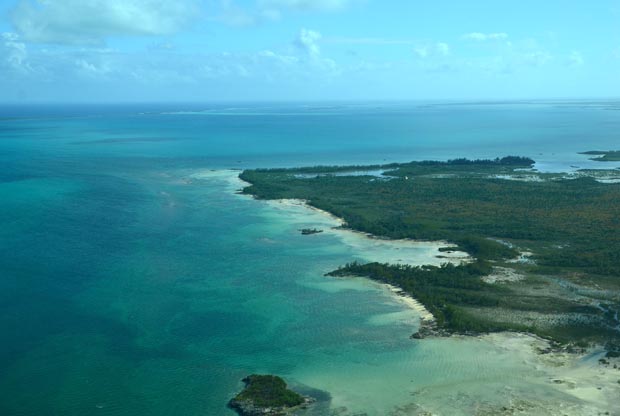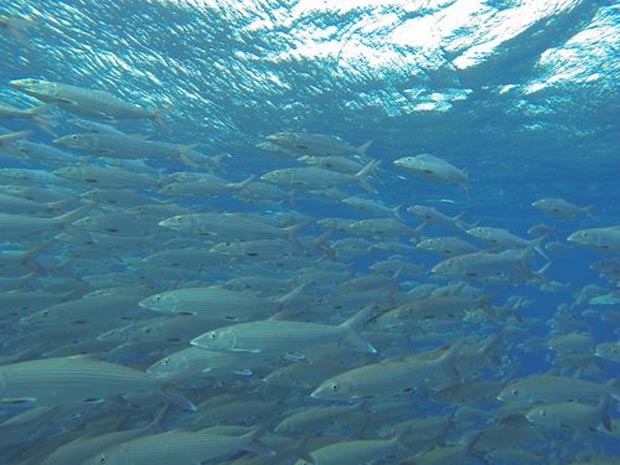[dropcap]T[/dropcap]ony Fedler, Ph.D. fisheries economist, working with the support of the Bonefish & Tarpon Trust, and others (listed below) applies economic analysis to fisheries conservation and finds that even an almost invisible population of anglers, infatuated with just a few species and their essential habitat, can make a significant economic contribution.
His study findings, presented at the 5th Bonefish & Tarpon Trust Symposium in November of 2014, are just the stuff that leads to improved governmental fisheries management, fosters partnership building by changing local attitudes to favor support of conservation measures.
Fedler’s paper, titled Economic Impacts of Bonefish, Permit and Tarpon, was a seven year long undertaking (2007 – 2014).
Scientific Abstract:
An angler’s love of bonefish, a scientist’s passion for tarpon, a community’s concern for declining fisheries resources and a government’s desire for economic development are all underpinned by one common factor – economics.
Generating funding for scientific research and management, protecting fish species from over-exploitation, conserving essential fish habitats, and providing access and promoting fishing activity all require some type of funding to occur. Funding for these activities is often problematic whether at the local, state, country or international level because of competition for public and private resources, competition among agency and organization priorities, and effects of local and global economies. Fisheries conservation programs, in general, are but one small component in the mix of priorities and funding for most governments and agencies.
When the focus falls on a single or few species or “essential” habitat, the priority often diminishes accordingly in the face of little to no information to raise concern. However, small segments of the fishing world can sometimes play a significant role in local and regional economies, yet remain relatively unnoticed in the larger scheme of economic concerns.
Government agencies, not-for-profit organizations and concerned individuals have begun recognizing the value of economic information in advocating policy and management changes to protect important natural resources. This is particularly true in small nations with abundant aquatic resources.
During the past seven years a number of economic impact studies have been commissioned to document the importance of fisheries resources to local and regional economies in order to influence decision making relative to their conservation and sustainability. This presentation summarizes findings from several recent fisheries economic impact studies in the Florida Everglades, Florida Keys, The Bahamas, and Belize to show the value of this type of research in raising public and agency awareness of the value of recreational fisheries and why the importance of sustainable fisheries management and habitat protection and enhancement is integrally related to the health of local economies.
Tony’s economic study targets were six flats:
Belize, southwest Florida tarpon study, Treasure Coast tarpon study, Florida Keys and the Bahamas. For a reference point, Fedler’s isolation of ‘flats’ anglers is important to note because the overall fishing impact could be extrapolated to add significantly to each regions’ angler economic impact.
Just what is Economic Impact Analysis:
Used to analyze the economic transactions associated with specific activities like sport fishing
Based on participant expenditures related to their involvement in the activity
Besides direct angler expenditures, indirect and induced effects of these expenditures occur adding a “multiplier” effect to angler expenditures
Wage and salary impacts can also be calculated
Number of full- and part-time jobs can be estimated as well
What are the Methods for Economic Impact Analysis?
Angler Expenditures
Direct angler surveys
Government visitor surveys
Lodge Expenditures
Advertised angler prices
Angler days
Reported expenditures by lodge owners
Guide Surveys
Trips reported by guides
Impact Multipliers & Jobs
Government economic data
Tourism economic reports
What was learned from Belize study?
Impacts increased over time
2007 Expenditures = $29,888,000
2014 Expenditures = $41,362,000
What increased?
Angler days increased
Angler expenditures increased
Total economic impacts increased by 38%
Some of the change may be due to:
Better cooperation by lodge owners
Better reporting by independent guides
Greater coverage of guides and lodges with personal interviews & Internet surveys
Better economic climate
Familiarity from previous surveys and BTT’s increased presence
Total impact changed
Updated impact multiplier was larger
What was learned from southwest Florida tarpon study?
Economic Impacts
Direct Expenditures = $ 63,539,000
Value Added = $108,614,000
Total Impact = $172,153,000
% of region tourism = Unknown
What was Learned
Tarpon fishing generates substantial angler expenditures in the region
Per angler spending is higher than for any other species
Tarpon tournament angling in the region makes a large contribution to the local economy
What was learned from Treasure Coast tarpon study?
Economic Impacts
Direct Expenditures = $11,383,000
Value Added = $ 8,076,000
Total Impact = $19,459,000
% of region tourism = Unknown
What was Learned
Relies mainly on seasonal tarpon migrations
Relatively small number of anglers and days resulting in comparatively small impact
Expenditures by non-resident tarpon anglers not accounted for in study
What was learned from Florida Keys study?
Economic Impacts
Direct Expenditures = $275,509,000
Value Added = $193,324,000
Total Impact = $465,834,000
% of Keys Tourism = 25.6%
What was Learned
Flats fishing overall is a large percentage of the tourism industry
Economic information was used in the Everglades National Park management plan process Study information was used in the Key West port dredging controversy
What was learned from the Bahamas study?
Economic Impacts
Direct Expenditures = $ 69,829,000
Value Added = $ 71,225,000
Total Impact = $141,054,000
% of All Tourism = 3.3%
What was Learned
Flats fishing overall is a small percentage of the tourism industry in The Bahamas
But, on Family Islands such as Eleuthera and Andros flats fishing is a primary industry
Economic information led to a greater commitment by the government to support the development of the industry
Study information has been used in arguments to protect fisheries habitat and water quality
How can we apply Economic Analysis?
Several examples mentioned previously
Raising awareness of the importance of the flats fishing industry in small countries has been the key to fisheries and habitat protection action and successes
Economic information can provide the impetus for raising the quality of flats fishing experiences from an industry perspective
Better trained guides
Higher quality resorts and lodges
Better training for tourism workers
Improved marketing resources
More competitive for international anglers
Improved governmental fisheries management
Fosters partnership building
Changes local attitudes and support for conservation
[information]
Tony Fedler’s study, as a fisheries consultant to the Bonefish & Tarpon Trust, was completed before he began working as a Coordinator at the Conserved Forest Resources & Conservation Department at the University of Florida.
The following organizations and businesses provided support for the Dr. Fedler’s study:
Bonefish & Tarpon Trust, Belize River Lodge, Everglades Foundation, Bahamas Flats Fishing Alliance, Garbutts Fishing Lodge and Turneffe Atoll Trust
Join the Bonefish & Tarpon Trust and stay in the know . . .
[/information]







